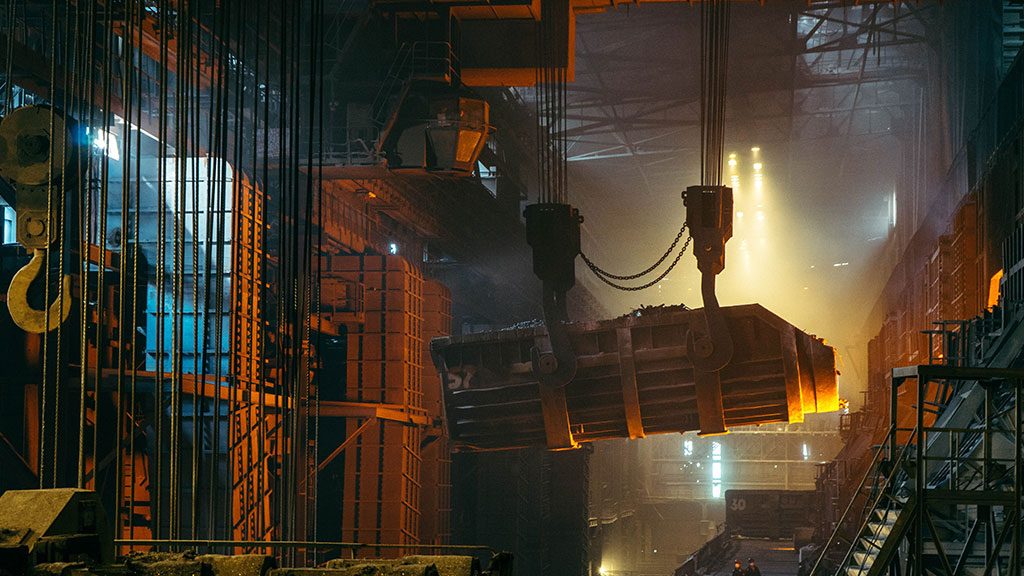One of the many signs that summer is over for another year is the recent return to school.
Compared to lying in the sun or reading a book at the cottage, sitting in a classroom and doing experiments in a lab is not very appealing. But all summer die-hards have to admit that education has its benefits, even if they come without a tan. Nowhere is that more true than at the McMaster University Steel Research Centre in Hamilton, Ont.
Professor Kenneth Coley, director of the centre, says it was established in 2000 “to encourage substantial involvement by its industrial members.”
The centre has 12 members, all of whom are steel producers and all of whom are anonymous.
“Together they represent most of Canada’s steel producing capacity,” said Coley.
To perform the research, the centre has eight engineering faculty, 15 graduate students and six post-doctoral researchers. Member companies provide technical and management guidance and sit on the centre’s board.
“The centre undertakes ‘pre-competitive research’ — scientific investigation that isn’t competitively sensitive — that is beneficial to the entire Canadian steel industry,” said Coley.
The member companies pay an annual membership fee to be a part of the centre.
Engineering faculty put forward projects for consideration. Then the members vote yes/no on the proposals and decide which ones they’ll support and take part in.
The proposed projects must satisfy an important condition: They have to benefit a Canadian steel producer or supplier.
The McMaster centre has the greatest breadth of coverage across the entire steel production chain
— Kenneth Coley
McMaster University Steel Research Centre
Once the projects have been selected for research, the professors leading the investigation apply for a government grant. The grant is matched by the steel producing member of the centre that is taking part in the project.
The centre has its steely fingers in many research pies; some are concerned with the iron- and steel-making processes, and some with final products. Research areas include process metallurgy, different ways to make iron, waste disposal, and electric furnace steel-making.
“The centre’s research has many benefits,” said Coley. “It saves energy, provides more control of the steel-making process, improves productivity and minimizes losses. It also optimizes product properties inexpensively and with as little material loss as possible.”
In addition to conducting research, the McMaster Steel Research Centre offers two training courses for working steel company personnel.
The blast furnace iron-making course is a week-long course held every second year.
“The course covers every aspect of blast furnace iron-making,” said Coley. “About 100 people take the course — managers, operators, engineers, researchers and suppliers of equipment and raw materials.”
The course consists of 24 lectures by experts in the field, supplemented by a computer game and plant tours. There is also a course on making coke, which is used to make steel. A fuel with a high carbon content and few impurities, coke is made by heating coal in the absence of air.
The coke-making course, which is patterned after the blast furnace course, is for operators, researchers and suppliers to the industry.
The week-long course consists of 18 lectures, supplemented by two case study workshops, a computer game and plant tours.
Coley says there are four other steel research centres in North America, including one at McGill University, that cover one or another aspect of the steel-making process.
“The McMaster centre has the greatest breadth of coverage across the entire steel production chain, from primary iron making to final steel products,” he said.
The Canadian steel producing industry has changed considerably from what it used to be.
Thanks to better productivity, today more steel can be produced with fewer people.
Nevertheless, in addition to Hamilton, there are steel producers in Whitby, Ont; Selkirk, Man.; Edmonton; Regina; Sault St. Marie, Ont.; and Contrecoeur, Que.
“The industry has changed in other ways, too,” said Coley. “Compared to 20 or 30 years ago, there’s more automation, more technology, lower levels of pollution, better controls, new grades of steel with better properties and new alloys. Most of these changes have been driven by demand from the automotive industry.”
Gordon Irons, professor emeritus of metallurgical engineering at McMaster, and one of the founders of the Steel Research Centre, says Canada needs to continue to make high-quality steel products — stronger and lighter — for the automotive industry.
“The same steel is used all over the world, and Canada needs to be able to produce steel for cars that are made not just for North America, but also for the international market,” he said. “And steel companies need researchers and experts who can make the steel that is needed by the auto industry.”











Recent Comments